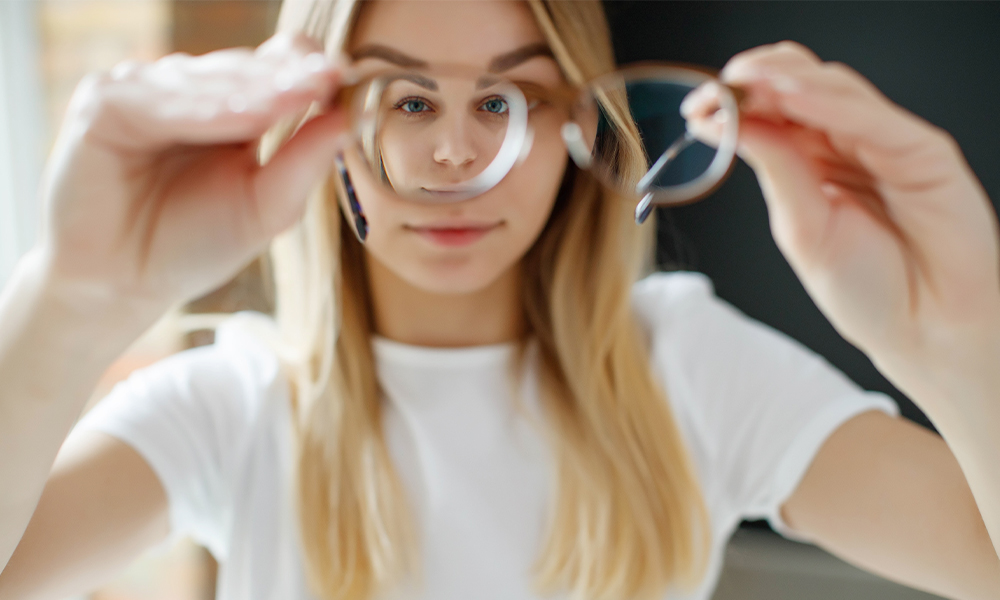Myopia, commonly called short-sightedness (“sight set too short”) makes it difficult to see distant objects clearly. It is a very common condition. Myopia’s onset is typically in the mid-teens and less frequently later in the twenties. There is considerable debate about whether myopia is inherited or whether it is exacerbated by excessive close work.
The prevalence of myopia has increased significantly over the past few decades, especially in certain population groups of East Asia. As a result, considerable effort and research has been conducted into how myopia occurs and how the progression of myopia can be halted or at least slowed. Current evidence supports a number of treatment methods for reducing the progression of myopia – these are reviewed below.
Recent studies such as the Atropine in the Treatment of Myopia (ATOM) project provide strong evidence to support the use of low concentration atropine eyedrops to retard the progression of myopia. Atropine is a prescription-only medication, the main effects of which are usual to dilate the pupil and relax the eye’s focusing (accommodation) system.
The most recent studies into atropine and myopia control show that atropine in low concentrations can significantly slow the progression of myopia without the usual side effects of pupil dilation and reduced functioning at near. It is believed that this effect is not due to the blocking of accommodation, but rather atropine’s effect on the receptors responsible for controlling the length of the eye.
Orthokeratology, also known as ortho-K, is a non-surgical process involving the wear of rigid contact lenses while sleeping. These lenses change the shape of the cornea, the clear tissue at the front of the eye. On awakening, distance vision is clear without the need to wear glasses or contact lenses during the day. The effect of wearing ortho-K lenses remains so long as the lenses are worn overnight, but the therapy is completely reversible.
Orthokeratology has increased in popularity over the past few decades, especially since a steady stream of evidence that indicates as well as correcting myopia in the short term, this therapy also slows the progression of myopia in the longer term. For more on the processes involved in orthokeratology fitting and treatment, click here.
Multifocal contact lenses are usually prescribed for patients with age-related decreased ability to focus on close objects. But recently they have also been used as another option to reduce the progression of myopia. Like orthokeratology, these lenses inadvertently blur the image that falls on the peripheral retina. This does nothing to compromise central vision and is not usually noticeable to the wearer, but also appears to slow the progression of myopia.
In 2020 Hoya released their innovative MiyoSmart spectacle lens after conducting research with Hong Kong Polytechnic University. The trials showed that these lenses with their Defocus Incorporated Multiple Segments (DIMS) reduced the progression of myopia by over 50%, comparable with other forms of myopia control. Like the contact lens options for myopia control, these lenses provide clear central vision while blurring the peripheral retinal image. More information on the MiyoSmart lenses can be found at https://www.hoyavision.com/au/vision-products/miyosmart/
The fee for the initial consultation for myopia management is $137.05 – this includes Lenstar biometric measurement of the axial length of the eye. If corneal topography is also required there is an additional fee of $49.70
The fee for single Lenstar biometric measurement of axial length is $37.75
The annual myopia maintenance fee for orthokeratology (after the first year) is $924 – this includes a new pair of corneal lenses, routine scheduled visits every 6 months including corneal topography, Lenstar axial length measurement biometry, and any unanticipated additional visits.
The fee for fitting soft daily disposable multifocal contact lenses for myopia management for the first time is $1,314 – this includes all visits required to determine the appropriate lenses, instruction in lens insertion, removal and care, and the first year’s supply of MiSight daily disposable contact lenses.
If atropine eye drops are prescribed in conjunction with other forms of myopia management, there is no additional charge for the prescribing of atropine. In the less usual circumstances where atropine drops are prescribed as a stand-alone treatment, the annual maintenance program fee is $318 – this includes routine scheduled visits every six months including corneal topography, axial length measurement biometry, and any unanticipated additional visits.
Click here for details of our myopia management fee plans.
Further information and resources to explore
- Protecting children from myopia information brochure
- Go to the Myopia Profile website
- Look at the Global Resources page at the Brien Holden Vision Institute website
- See also the Myopia Care website

